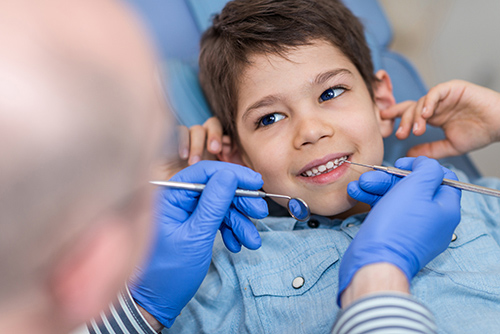South Ogden
What to Do When You First Notice a Pediatric Cavity
Like many things when it comes to dental health, the way you react to something when you first notice it is very important. The problem is that many people do not know what he right thing to do is when they notice a pediatric cavity. Instead of making a mistake, it is better to take some time to learn the right steps.

Where Does the Cavity Come From
A cavity is a hole in the tooth that is a result of the hard-outer cover of the tooth decaying. The decay is the result of bacteria in the tooth. Toddlers often get cavities when they fall asleep nursing a bottle. The sugar from the liquid causes the formation of the bacteria that lead to decay and the cavity. Older children can develop cavities as a result of poor oral hygiene.
What You Can Do
Unfortunately, the first sign of a pediatric cavity is pain. If the child is in pain and crying or showing discomfort while holding their mouth, it is a sign of a problem. A parent needs to act in a few different ways. The first and most important thing to do is to comfort the child and ease the pain. Rinsing the mouth with warm salt water can help and applying cold compresses is an option if there is swelling. It is also okay to give a child acetaminophen to help with the pain, but it is not a good idea to put aspirin or heat on the sore area.
After treating the pain, a parent needs to take care of the pediatric cavity That means contacting our pediatric dental service to make an appointment and to bring the doctor in to see our staff. They can take care of the cavity, so the pain will disappear.
For more information about how to get an appointment or what to do when a child has a pain from a cavity, contact us at our office.
